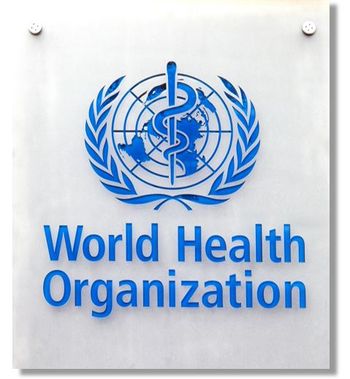
Insulin or Incretin Becomes Insulin and Incretin
It is hard to believe we have had injectable glucagon-like peptide-1 (GLP-1) agonist therapy available for over 5 years! Originally marketed to endocrinologists, this class of incretin-based therapy has quickly been taken up by many primary care providers (PCPs). With the advent of twice-daily, daily, and now weekly dosing options, there is no denying that GLP-1 agonists will become an even more significant part of diabetes care strategy in busy primary care practices. These drugs, and particularly the newer daily and weekly formulations, offer us a lot: unsurpassed ease of use and attractive postprandial and overnight glucose control that leads to substantial A1C reduction and the promise of weight loss.1
So what specifically will make incretin-based therapies (GLP-1 agonists and DPP-4 inhibitors [DPP-4s]) increasingly attractive to primary care providers? First, the use of these agents can be taught in a few minutes in the setting of a PCP office. Second, their use is nearly fool-proof. DPP-4s are taken orally and GLP-1 agents are administered with pen devices or a very simple to use weekly dose kit. It is nearly impossible for a patient to receive an accidental overdose. If that did occur, the consequences would be minimal because incretin-based therapies cause glucose-dependent release of insulin, which significantly reduces the risk of accidental hypoglycemia. Finally, the fact that these therapies do not require titration makes them easy to teach and easy for patients to use.2-7
Treatment after metformin. I have great respect for the ADA/EASD treatment algorithm.8 I agree that lifestyle change should be a foundational component from the beginning with metformin therapy. But what does the clinician committed to excellent diabetes care do when the metformin/lifestyle therapy proves inadequate? If well informed about the dangers of hypoglycemia and treatment-associated weight gain,9 the clinician should be looking at adding incretin therapy: an oral DPP-4 if modest A1C reduction (-0.5-0.9%) is required and weight loss is not a consideration or an injectable GLP-1 agonist if greater A1C reduction (-1.0-1.5%) is the goal or weight loss is a consideration. These drugs are a very viable consideration in almost all patients not at goal on metformin monotherapy.
Currently, there are 3 GLP-1 therapies indicated and FDA-approved for use with metformin or other oral antidiabetic drugs (OADs)-Exenatide (Byetta),5 exenatide QWK (Bydureon),6 and liraglutide (Victoza).7 While sitagliptin and saxagliptin (DPP-4s) are approved for use with basal insulin, exenatide is the only GLP-1 therapy currently approved for use with basal insulin.10 The effectiveness of the metformin + incretin therapy (DPP-4 I or GLP-1 agonist) combination along with the proven glycemic durability of such a strategy will get, and keep, many patients at A1C goal.
The future for insulin? Other patients may require more potent reduction of fasting blood sugars (FBS) to get to A1C goal; this may require the addition of basal insulin to metformin.11 To date, basal insulin has no peer when it comes to reduction of FBS.12 And while our general strategy for almost a decade has been to “fix fasting first”11 clinicians may be underestimating the concomitant importance of controlling postprandial glycemic excursion. A recent article about postprandial control in the elderly showed a clear correlation between poor postprandial control and adverse cardiovascular events.13 Similar findings have been suggested by the DECODE14 and Honolulu Heart15 studies.
In a global survey, 38% of physicians indicated that the technical difficulty of intensifying basal insulin therapy with rapid acting mealtime insulin (RAI) is a significant barrier to diabetes treatment.16 This suggests that there should be a place for an “easier-to-deploy” prandial therapy than RAI. The daily or weekly injectable GLP-1 agonists, which exert potent control over postprandial glycemic excursion and that are somewhat free of hypoglycemia risks, are prime candidates for consideration. In fact, in the last several months, one GLP-1 therapy (exenatide) and 2 DPP-4s (sitagliptin and saxagliptin) have quietly been approved for use with long acting analog insulin (LAI) glargine.2,3,5 This combination of glargine and incretin-based therapy is not an incidental pairing. Combining these drugs harnesses the powerful basal glycemic control of glargine with the modest postprandial effect of the DPP-4 Is or the potent postprandial impact and weight loss potential of a GLP-1 agonist.17
Along the lines of “less is more,” the combination of insulin and incretin-based therapies allows the clinician to cut through the confusion of over 50 diabetic drugs in 11 classes and focus on improving diabetes care with agents selected from only 3 classes-biguanides (metformin), LAI, and incretin-based drugs. Such a strategy could greatly simplify the knowledge base required to choose effectively among these drugs and allows the busy clinician to address both aspects of glycemic control (basal and postprandial) in almost every T2DM patient using regimens that are simple to teach and simple to use.
References:
1. DURATION-6 Top-Line Study Results Announced [news release]. Waltham, MA: Amylin Pharmaceuticals, Inc; Eli Lilly and Company; Alkermes, Inc; March 31, 2011.
2. Januvia [package insert]. Whitehouse Station, NJ: Merck and Company;2012.
3. Onglyza [package insert]. Princeton, NJ: Bristol-Myers Squibb; 2011.
4. Tradjenta [package insert]. Ridgefield, CT: Boehringer Ingelheim Pharmaceuticals, Inc; 2011.
5. Byetta [package insert]. San Diego, CA: Amylin Pharmaceuticals, Inc; 2011.
6. Victoza [package insert]. Bagsvaerd, Denmark: Novo Nordisk A/S; 2011.
7. Bydureon [package insert]. San Diego, CA: Amylin Pharmaceuticals, Inc; 2012.
8. Nathan D, Buse JB, Davidson, MB Algorithm for the Initiation and Adjustment of Therapy. A consensus statement of the American Diabetes Association and the European Association for the Study of Diabetes. Diabetes Care. 2009;32:193-203.
9. Long-term effects of intensive glucose lowering on cardiovascular outcomes. The ACCORD Study Group. N Engl J Med. 2011;364:818-828.
10. Buse JB, Bergenstal, RM, Glass LC, et al. Use of twice-daily exenatide in basal insulin-treated patients with type 2 diabetes: a randomized, controlled trial. Ann Intern Med. 2011;154:103-112.
11. Riddle MC, Rosenstock J, Gerich J; Insulin Glargine 4002 Study Investigators. The treat-to-target trial: randomized addition of glargine or human NPH insulin to oral therapy of type 2 diabetic patients. Diabetes Care. 2003;26:3080-3086.
12. Nathan DM. Finding new treatments for diabetes-how many, how fast . . . how good? N Engl J Med. 2007;356:437-440.
13. Raz I, Ceriello A, Wilson PW, et al. Post hoc subgroup analysis of the HEART2D trial demonstrates lower cardiovascular risk in older patients targeting postprandial versus fasting/premeal glycemia. Diabetes Care. 2011;34:1511-1513.
14. The DECODE Study Group: Glucose tolerance and mortality: comparison of WHO and American Diabetes Association diagnostic criteria. Lancet. 1999;354:617-621.
15. Donahue RP, Abbott RD, Reed DM, et al. Postchallenge glucose concentration and coronary heart disease in men of Japanese ancestry: Honolulu Heart Program. Diabetes. 1987;36:689–692.
16. Cuddihy RM, Philis-Tsimikas A, Nazeri A. Type 2 Diabetes care and insulin intensification: is a more multidisciplinary approach needed? Results from the MODIFY survey. Diabetes Educ. 2011;37:111-123.
17. DeFronzo RA, Okerson T, Viswanathan P, et al. Effects of exenatide versus sitagliptin on postprandial glucose, insulin and glucagon secretion, gastric emptying, and caloric intake: a randomized, cross-over study. Curr Med Res Opin. 2008;24:2943-2952.
Newsletter
Enhance your clinical practice with the Patient Care newsletter, offering the latest evidence-based guidelines, diagnostic insights, and treatment strategies for primary care physicians.



















































































































































































































































































